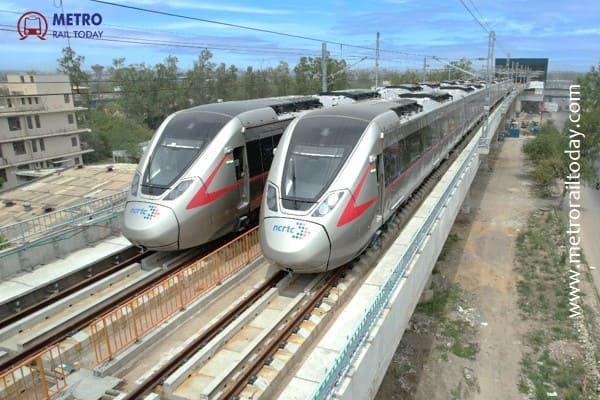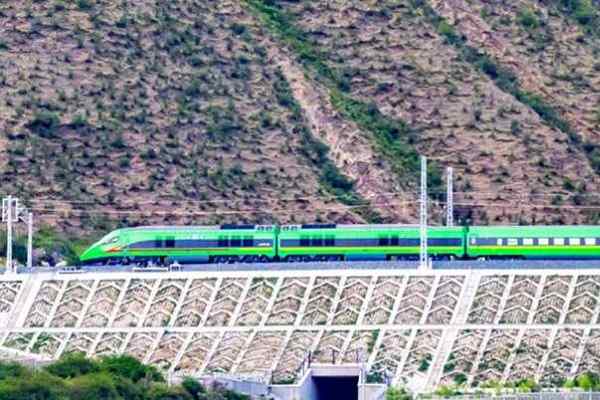 Saudi Arabia and Qatar Sign Landmark Agreement for Riyadh–Doha High-Speed Rail Link
Saudi Arabia and Qatar Sign Landmark Agreement for Riyadh–Doha High-Speed Rail Link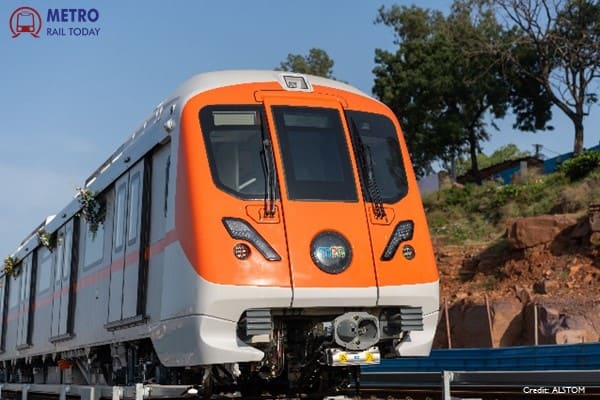 PM Narendra Modi to inaugurate Bhopal Metro operations on December 20, CMRS approval received
PM Narendra Modi to inaugurate Bhopal Metro operations on December 20, CMRS approval received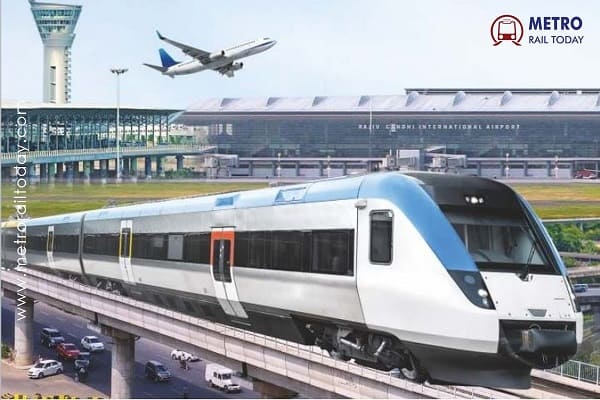 Centre orders NCRTC to prepare revised DPR for ₹20,637 crore Delhi-Noida Airport RRTS Corridor
Centre orders NCRTC to prepare revised DPR for ₹20,637 crore Delhi-Noida Airport RRTS Corridor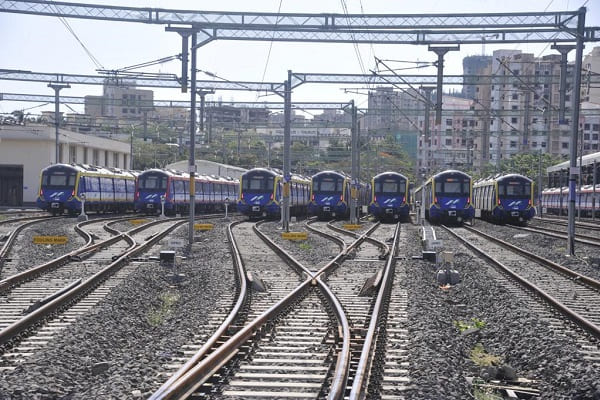 Mumbai Metro deploys Indigenous AI-Based Wheel Profile Monitoring System in Charkop Depot
Mumbai Metro deploys Indigenous AI-Based Wheel Profile Monitoring System in Charkop Depot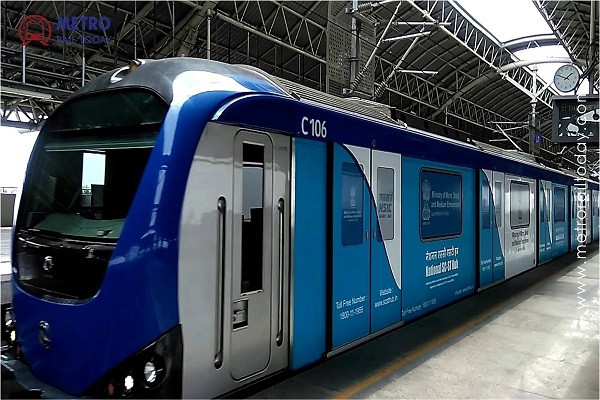 ADB approves $240 million loan to accelerate Chennai Metro Phase 2 Expansion
ADB approves $240 million loan to accelerate Chennai Metro Phase 2 Expansion Kalpataru Projects-HG Infra Engg JV bags ₹1,415 Crore EPC Contract for Thane Metro Rail Project
Kalpataru Projects-HG Infra Engg JV bags ₹1,415 Crore EPC Contract for Thane Metro Rail Project MAHA Metro floats ₹223.70 Crore Civil Tender for Six Elevated Stations of Thane Metro Rail Project
MAHA Metro floats ₹223.70 Crore Civil Tender for Six Elevated Stations of Thane Metro Rail Project Construction begins on Delhi Metro Phase 4's Saket G Block–Lajpat Nagar Corridor
Construction begins on Delhi Metro Phase 4's Saket G Block–Lajpat Nagar Corridor Kerala proposes RRTS as alternative to K-Rail Silver Line, Eyes faster clearances under Metro Policy
Kerala proposes RRTS as alternative to K-Rail Silver Line, Eyes faster clearances under Metro Policy India’s Metro Rail Network crosses 1,080 km as Southern States drive expansion
India’s Metro Rail Network crosses 1,080 km as Southern States drive expansion
Uttar Pradesh Govt approves ₹16,000 Crore Noida - Delhi Airports Rapid Rail Corridor

Lucknow, India (Metro Rail Today): In a significant move to enhance transportation connectivity, the Uttar Pradesh government has approved a Rs 16,000 crore rapid rail corridor, linking the upcoming Noida Airport (Jewar Airport) to Delhi's Indira Gandhi International Airport. The National Capital Region Transport Corporation (NCRTC) is actively working on the detailed project report, slated for completion by March.
The proposed rapid rail corridor not only aims to connect the two airports but also envisages seamless integration with various parts of Delhi. High-speed rail networks connecting multiple airports are a global norm, ensuring efficient passenger transfers and fostering regional connectivity. The corridor's detailed project report is anticipated to provide insights into the project's scope, design, and execution timelines.
According to Shailendra Bhatia, Nodal Officer at Noida International Airport Limited, the project, once initiated, is projected to be completed within four years. This strategic rail corridor is poised to significantly augment the appeal of the Noida Airport, attracting spill-over passenger traffic from the bustling Delhi Airport. With its first flight scheduled later this year, the Noida Airport has already secured agreements with prominent airlines like IndiGo and Akasa Air for flight operations.
Key details of the Noida-Delhi Airports Rapid Rail Corridor include branching out from the Ghaziabad station, serving as an interchange station for the Delhi - Meerut RRTS Corridor. Passengers will have convenient access to the under-construction Delhi-Alwar RRTS Corridor through Sarai Kale Khan, the originating station of the Delhi-Meerut RRTS Corridor. The completion of the Delhi-Alwar rail is expected by mid-2025, featuring a station at Indira Gandhi International Airport and Aerocity.
Noida - Delhi Airports RRTS Corridor: At a glance
- Total Length: 72.2 km
- Total Stations: 12
- Project Cost: ₹16,189 crore (Phase I - ₹9,789 crore, Phase II - ₹6,391 crore)
- Station Name: Noida International Airport, YIEDA Central (Sector 21, 35), YIEDA North (Sector 18), Dankaur, Ecotech VI, Pari Chowk (Interchange with Aqua Line Metro), Surajpur, Knowledge Park V, Greater Noida (Sector 2), Greater Noida (Sector 4), Ghaziabad South and Ghaziabad (Interchange with Delhi-Meerut RRTS).
- No. of Phases: 2
- Project Completion Deadline: Phase I - 2031, Phase II - 2041.
- Phase I Stations (37.15 km): Ecotech VI, Pari Chowk (Interchange with Aqua Line Metro), Surajpur, Knowledge Park V, Greater Noida (Sector 2), Greater Noida (Sector 4), Ghaziabad South and Ghaziabad (Interchange with Delhi-Meerut RRTS).
- Phase II Stations (35.11 km): Noida International Airport, YIEDA Central (Sector 21, 35) and YIEDA North (Sector 18), Dankaur
The entire travel time between the two airports is estimated to be approximately 80 minutes, offering a swift and efficient transport solution. Despite considering alternatives like an express metro directly connecting the two airports, the Noida rapid rail emerged as a feasible and cost-effective choice. Furthermore, authorities at Noida airport are exploring additional modes of public transportation, such as high-speed bus corridors, to establish connectivity with Delhi and Gurgaon.
Shailendra Bhatia emphasized the significance of high-speed connectivity between the airports and the Delhi region to expand the airport's catchment area. The project has received the approval of Chief Minister Yogi Adityanath, showcasing the government's commitment to advancing transportation infrastructure in the state.
To further enhance the Noida airport's attractiveness, officials are planning a multi-modal transport connectivity strategy. Christoph Schnellmann, the CEO, anticipates the airport to be operational by the end of the year, highlighting ongoing activities such as runway asphalting, paving, and baggage system installation. The airport's development is poised to accelerate in the coming months, with collaborative efforts underway to create enriching retail and food and beverage experiences.
As the Uttar Pradesh government paves the way for this transformative rapid rail corridor, it marks a crucial milestone in bolstering regional connectivity, reducing travel time, and fortifying the state's position as a hub for dynamic and efficient transportation networks.





